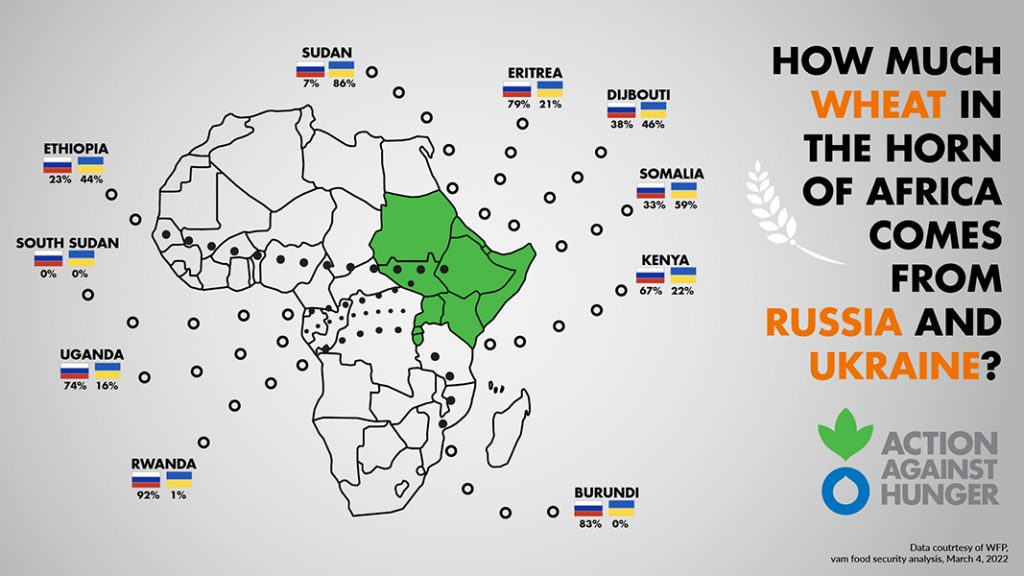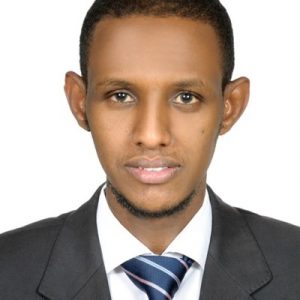The war in Ukraine is exacerbating an already dire food crisis in the Horn of Africa. Just a few weeks ago, in Somalia, Kenya and Ethiopia, roughly 13 million people were waking up severely hungry every day.
Now, given their reliance on Ukrainian and Russian imports such as wheat and cooking oil, food prices are skyrocketing, putting access to basic nutrition even further out of reach.
In 2020, African countries imported $4 billion in agricultural products from Russia and $2.9 billion from Ukraine, with the Horn as the top destination. My organization’s market assessment in Mogadishu, Somalia, found a 50% increase in the price of flour in just the last few weeks. African economies also relied on about $5 billion in product exports to Russia, including coffee, fruits and tobacco, which have all halted recently, crippling already fragile financial systems.
Just this week the UN Conference on Trade and Development issued a report predicting food shortages and civil unrest. The governments of Kenya and Somalia have declared national emergencies.
Sadly, the conflict in Ukraine is only the latest in a bombardment of shocks to the Horn of Africa. The region is experiencing the worst drought in recent history, forcing hundreds of thousands of people to leave their homes in search of water. Many are living in refugee camps where they are unable to grow food on the dry lands. Pastoralists, who make up about half of Somalia’s population, are not able to feed the livestock that they depend on for survival. Our best estimates are that at least one million heads of livestock have already died or migrated.
6 Ways You Can Help
There are many ways to help people suffering in these forgotten crises, and we hope that leading companies and individuals will consider the following:
- Donating to trusted organizations like Action Against Hunger
- Using their platforms – social media, websites, newsletters – to inform and inspire others
- Exploring Board and Advisory positions with nonprofits
- Offering to match donations made by their employees
- Calculating and mitigating your personal and corporate carbon footprint
- Reaching out to charities to explore new and creative ways to partner over the long-term
Afifa Ali Abd is one of the 2.6 million Somalis forced to leave home. She is now living in a refugee camp in another area of the country. A mother of seven children, Abd says more people are arriving at the camp, but there is no shelter, food or water to be found. “My family went to sleep hungry last night, we will go to sleep hungry tonight,” she said. Neither she nor her husband can find work and food in the market is unaffordable without any income.
In addition to rising food prices, ongoing armed conflicts in parts of the region also are forcing people to search for food, water and safety elsewhere. In recent years, floods and cyclones have destroyed homes, displacing even more families. Locusts have destroyed crops.

And of course there are the economic impacts of COVID-19 lockdowns and ongoing supply chain disruptions. Africa had no safety nets in place before the pandemic, and our economies have not recovered. According to the World Bank, the pandemic pushed 40 million more people in Africa into extreme poverty. I am not sure how much more the people in this region can take.
Prior to the conflict in Ukraine, we had a massive deficit in food supplies. Now, it’s becoming increasingly hard to find solutions. In Kenya, upwards of four million people will need assistance because of drought, including and 600,000 children younger than age five who are already suffering from acute malnutrition. We are trying to treat as many children as we can for malnutrition and make sure they have nutritious food so that they can grow normally, but we can’t reach everyone.
We’re trying to help people become more self-sufficient. In Uganda, for example, where the government has given millions of refugees small parcels of land, we are teaching people to grow drought-resistant crops, and sell any leftovers at the market. We’re also providing cash to help families buy food. But it’s not enough. People are barely surviving.
I’ve been a humanitarian aid worker in Africa for 18 years. We are accustomed to crises. There have been food shortages, droughts and conflicts that have impacted people’s livelihoods and food security. But in the last couple of years, the shocks are coming from all directions and compounding each other, creating a dire situation for the world’s most vulnerable. It’s hard not to feel overwhelmed.
It’s difficult even for donors to focus on more than one issue at a time, but the people we serve don’t have that luxury. Right now, the global community’s attention is on helping the people of Ukraine, and rightly so. But we can’t lose sight of the daily, life-threatening crises elsewhere around the world.
Climate collapse, conflict, and the economic impacts of COVID-19 stretched the already-fragile system in the Horn of Africa. The situation in Ukraine is putting even more strain on our dwindling energy and resources. My hope is that this horrible conflict will bring more visibility to the ways we are all interconnected and to the need to address the multiplicity of challenges humanity faces together.





